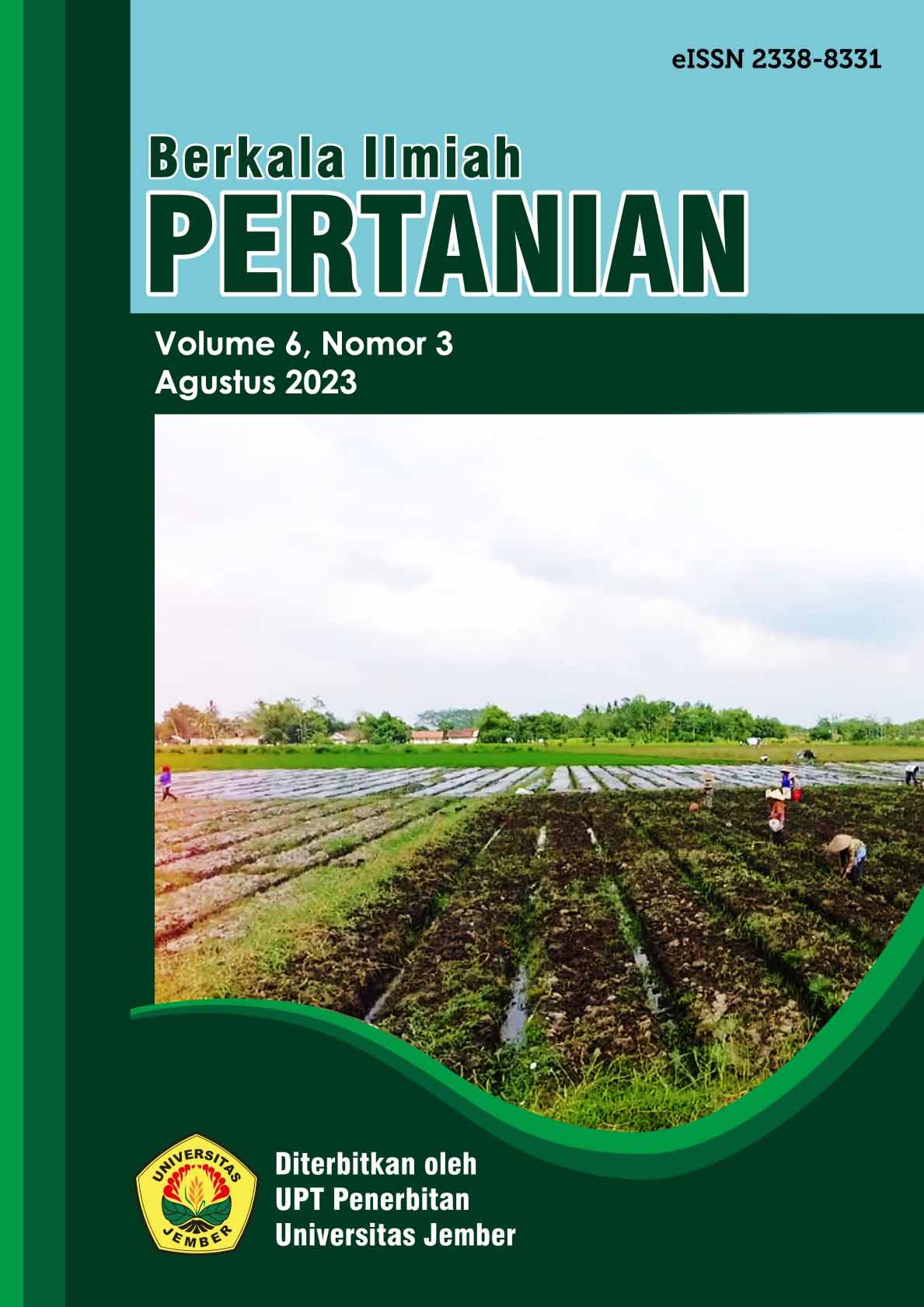Inovasi Budidaya Tanaman Gambas (Luffa acutangula) Kajian Aplikasi Pupuk Cair Organik dan Petroganik
DOI:
https://doi.org/10.19184/bip.v6i3.41077Abstract
The luffa plant of the Cucurbitaceae family or the pumpkin tribe has a high content of vitamins, A, B, C, high fiber, the fruit is green in color, the skin is rather rough and is used for vegetables. Gambas is popular with the public because it tastes slightly sweet,, is often used in various dishes because its nutritional value is very good for the immune system. The problem that occurs is gambas is a vegetable that is less popular than cucumber, lettuce, mustard greens, and others and in Kediri its production has decreased due to factors that support development, there are problems, especially the use of fertilizers. The aim of the experiment was to study the innovation of squash cultivation with the application of POC and Petroganik on the effect of the interaction between the treatment combinations in increasing the growth and production of the squash plant. Experimental design using Factorial RAK, with experimental treatment to one dose of POC consisting of 3 levels 8 ml/L, 10 ml/L, 12 ml/L and the second petroganic dose is 10 tonnes/Ha, 12 tonnes/Ha, 14 tonnes/Ha , there were 9 combinations, repeated 3 times and there were 27 experimental units. The results showed that there was a significant effect and interactions occurred in the combination of treatments, the best data was P3N3 (Petroganik 14 ton/Ha and POC 12 ml/L) which produced a plant height of 1.91 cm, number of leaves 47.38, number of fruit 8.57 , Fruit weight 850.37 grams, fruit length 32.65 per plant. So innovations in the cultivation of gambas plants should use the best treatment, namely P3N3, and other factors that must be considered include quality seeds, soil must have good physical and chemical properties, a climate that supports growth, environmental temperature around 25-280 C. And pH around 5,6.
Downloads
Downloads
Published
Issue
Section
License
Authors who publish with this journal agree to the following terms:
1.Authors retain copyright and grant the journal right of first publication with the work simultaneously licensed under a Creative Commons Attribution-NonCommercial 4.0 International License that allows others to share the work with an acknowledgement of the work's authorship and initial publication in this journal.
2.Authors are able to enter into separate, additional contractual arrangements for the non-exclusive distribution of the journal's published version of the work (e.g., post it to an institutional repository or publish it in a book), with an acknowledgement of its initial publication in this journal.
3.Authors are permitted and encouraged to post their work online (e.g., in institutional repositories or on their website) prior to and during the submission process, as it can lead to productive exchanges, as well as earlier and greater citation of published work (See The Effect of Open Access).




















